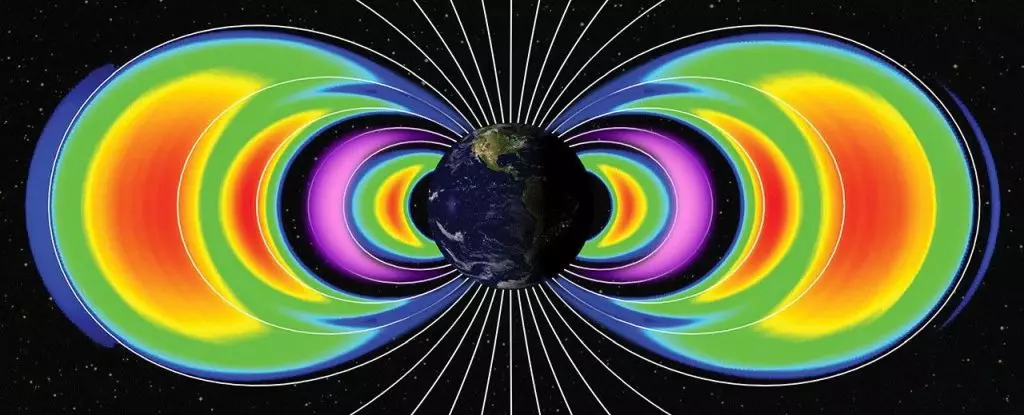In May 2024, Earth experienced an extraordinary solar storm that not only dazzled our skies with vibrant auroras but also unveiled a new frontier in space weather research. As solar flares erupted with unprecedented intensity, the ensuing barrage of solar particles profoundly impacted our planet’s magnetic field. These phenomena resonated from the highest skies down to the deepest ocean trenches, illustrating just how interlinked the Earth and sun are. Yet, while visual effects like auroras captured public imagination, the more significant revelations were unfolding within Earth’s magnetosphere.
To comprehend the implications of the May 2024 solar storm, we must first understand what radiation belts are. Most planets with magnetic fields, including Earth, are encircled by belts of charged particles—specifically electrons and protons. The Van Allen belts, established in the late 1950s, are the two primary systems that serve as Earth’s protective mechanism against solar wind and cosmic radiation. The inner belt consists of high-energy protons, while the outer belt is primarily populated with electrons. These belts are crucial as they mitigate the risk posed by solar radiation, enabling life on our planet.
What makes the recent solar storm particularly groundbreaking is the formation of two new temporary radiation belts subsequent to the storm. Scientists observed, for the first time, the emergence of a belt composed of energetic protons, as well as a secondary belt predominantly made up of electrons.
The findings of scientists, including physicist Xinlin Li from the University of Colorado Boulder, are astonishing. The presence of energetic protons in the newly formed belts challenges existing models of radiation belts, suggesting that there are still elements of our magnetic environment left to explore. David Sibeck from NASA’s Goddard Space Flight Center highlights the significance of these particles potentially lingering long after their creation, marking a pivotal point in space weather research.
What does this mean for our understanding of space weather? Firstly, it indicates that Earth’s atmospheric shielding may be more complex and dynamic than previously thought. Second, ongoing measurements over the following months will be essential not only to analyze the longevity of these belts but to assess their risk potential for satellites and other orbital technologies.
Interestingly, these new radiation belts endured much longer than anticipated. Whereas previous temporary belts usually dissipated within weeks, the ones following the May storm remained stable for around three months. This raises essential questions about the long-term behavior of solar particles in Earth’s magnetosphere and their potential effects on both human life and technology.
The situation becomes even more complex as subsequent solar storms occurred in June and August of 2024, reducing the density of particles in the belts but leaving fragments behind. The residual proton belt, notable for its stability, may persist beyond a year, warranting continuous observation. Scientists must now develop mitigation strategies to safeguard satellites and other technologies from potential hazards posed by these persistent high-energy particles.
The scientific community is fervently pursuing further studies to decode the risks associated with these new radiation belts. As our reliance on satellite technology continues to grow, understanding the implications of such natural phenomena becomes crucial for the success and safety of our systems. Future research efforts will need to quantify the threat level posed by high-energy particles, guiding engineers and technologists in the development of robust countermeasures.
Moreover, these findings serve as a reminder of just how unpredictable and awe-inspiring cosmic events can be. The May 2024 solar storm not only offered a spectacular light show but catapulted us into a new era of space research, expanding our comprehension of radiation belts and their potential impacts. With each solar storm, we inch closer to mastering the vast and volatile environment surrounding our planet, while reinforcing the critical importance of observing our celestial neighbors.

